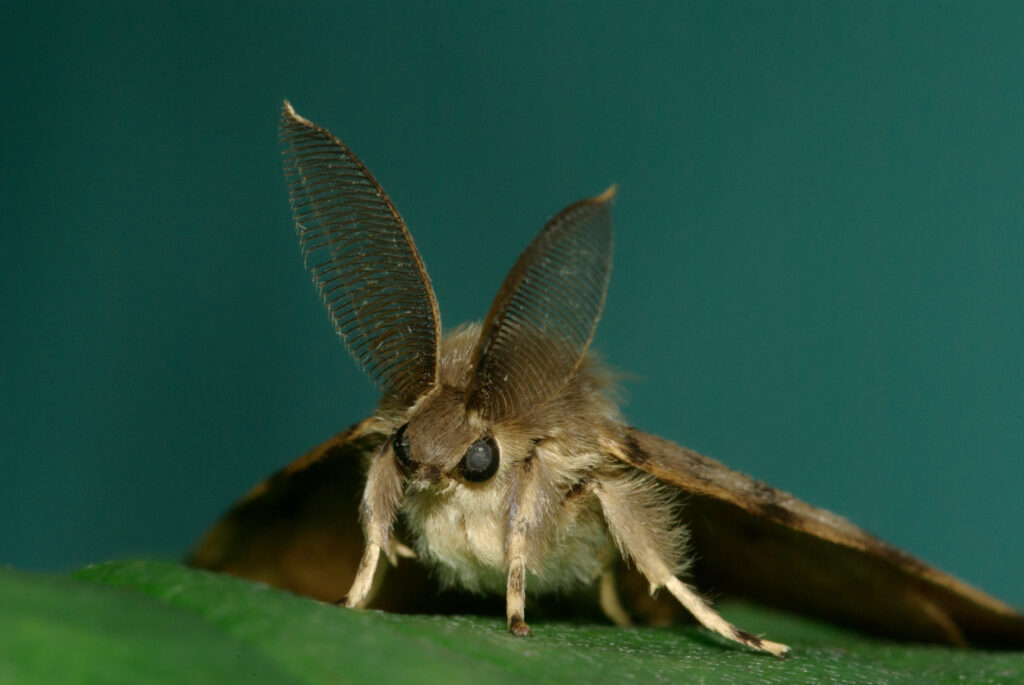
Getting to Know Your Forest Health Team: Bill McNee and The Spongy Moth
Spongy moth caterpillars usually start hatching between mid-April and early May in the southern counties of Wisconsin. Though they have largely been out of sight in rural forests for close to a decade...
By Denise Thornton
Spongy moth caterpillars usually start hatching between mid-April and early May in the southern counties of Wisconsin. Though they have largely been out of sight in rural forests for close to a decade, annual monitoring is still a good idea, according to Bill McNee, DNR Forest Health Specialist for Southeast Wisconsin.
The DNR is working with the Entomological Society of America to promote the name change of this pest from gypsy moth to spongy moth. The previous name was removed due to its use as a derogatory term for the Romani people. The new name comes from the common name used for this moth in France and French-speaking Canada, “spongieuse” and refers to the moth’s sponge-like egg masses.
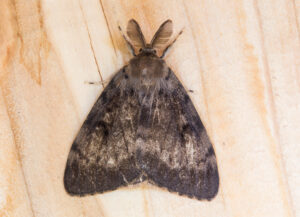
“It’s a very weather-dependent insect,” McNee says. “Typically this pest has a population increase in response to favorable conditions — a mild winter and a warm, dry spring and summer. Outbreaks (periods of high populations) are more likely with consecutive years of favorable weather conditions. The late 2010s generally saw low populations due to two consecutive winters with a polar vortex, which killed some of the eggs directly, and very wet conditions that promoted the fungal disease, Entomophaga maimaiga, that kills many of the caterpillars. More recently, we have had favorable conditions for this insect, and the odds favor increased populations given the weather so far in 2022.”
In 2021, about 300 acres of defoliation was reported at scattered sites in northern and eastern counties. (In contrast, nearly 350,000 acres were defoliated during a record-setting outbreak in 2010). “Given historical trends and the weather we’ve had, this may be the tip of an iceberg rising higher, and we may be beginning a cycle where populations will be high across much of the state,” says McNee.
A spongy moth population was first seen in the eastern part of the state 35 years ago and the first recorded defoliation was spotted in Oconto County in 1997. It is not well-established in many of the western counties yet — except for small, isolated pockets,” says McNee.
Certain parts of Wisconsin will be more heavily affected by this pest than others. Dry sites with sandy soil are one area that will suffer from frequent, heavy outbreaks. Examples include central Marinette County and the Legend Lake area in Menominee County. In addition, the Driftless area has long been predicted to be a part of the state where the insect will do very well — especially on ridge tops and south facing slopes where you get trees that are stressed or their bark is thick with lots of hiding places for the caterpillars and egg masses. It’s warmer and drier so the diseases and wasps who parasitize some of the moth’s life stages may not be as effective at reducteing pest populations.
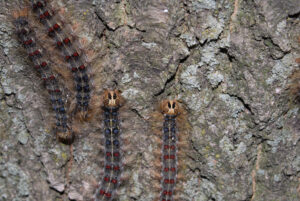
Many landowners who dealt with this insect a decade or two ago don’t own the property anymore, so outbreaks may be a relatively new thing to many people. Having been a forest entomologist for over 20 years, McNee hopes he can help land owners with his perspective and encourage them to prepare ahead of time. Start by paying attention if you have a forest that is susceptible to defoliation by caterpillars. Oaks, aspen, willow, birch, tamarack and crab apples are some of the targeted species, says McNee, “but the tree we are most concerned about is oak because it is the most valuable tree on the list.”
“If you prepare now, you can decrease the impact of defoliation on your woods and reduce the risk of unacceptable mortality levels,” McNee advises. He urges land owners to work with a forester. “If you have a forest management plan, look at it, and ask a forester if it should be revised. If you don’t, a management plan would be a good idea to actively manage your woods.”
A forester, says McNee, can help land owners to keep their trees healthy and vigorously growing, with a suitable mix of species for their site. “In general, the outbreaks are most intense were there is a high proportion of desirable tree species. When the forest is a mix of species, the overall moth population will not get as high. Individual trees may be hammered but the overall effect tends to be lower when you have a diversified forest with healthy trees. Tree mortality is often heavy when these susceptible species are weakened by old age, drought or other stresses in combination with heavy defoliation.”
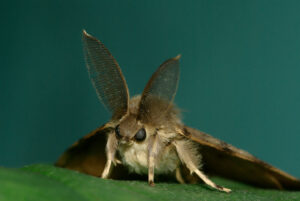
It usually takes a couple of years for a spongy moth population to build up to outbreak levels. “We found at Devils Lake State Park and in the Kettle Moraine State Forest where we did aerial spraying this spring, the infestation blew up more rapidly than we predicted,” says McNee. “Depending of the weather, the populations can fluctuate rapidly up or down in a year. That’s why it’s important to monitor annually.”
For specific information on what spongy moth infestation looks like and how to monitor it, check out the DNR Forest Health Website.
After Labor Day (all of the eggs have been produced by then), do a walk through of your property and look for newly produced egg masses. There is also a formal circular plot survey that can be used to predict the population levels for 2023, available here.
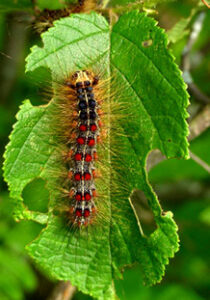
“Those eggs are just going to sit there till the follow spring, so you have time to plan to do something, be it oiling the egg masses, scraping them off into soapy water or putting up burlap or sticky bands on the trunks of a manageable number of trees. For a larger property you have time to organize an aerial spray for next year if that’s decided to be the appropriate strategy. It’s too late to do an aerial spray in 2022, and spraying is typically done only for high-value trees. The costs are higher now than during the last outbreak period, and $70 per acre would not be unusual for a treatment cost these days.”
It is important, McNee emphasized, to meet these pests with a diversified forest in good health, and this is done by planning ahead with the help of a forester. More non-native pests and diseases are going to keep coming, often as hitchhikers inside a shipping container. One pest likely to eventually arrive in Wisconsin is the hemlock wooly adelgid, an aphid-like insect that sucks the sugars out of hemlock trees, as it has already made its way to Michigan and other eastern states.
“On average, Wisconsin is predicted to become a little wetter and warmer decade by decade,” says McNee. “What we plant this year is going to be in the ground 50-100 years from now. We need to plan ahead. We need to prepare now for having a forest well suited to the year 2070 or 2120.”
